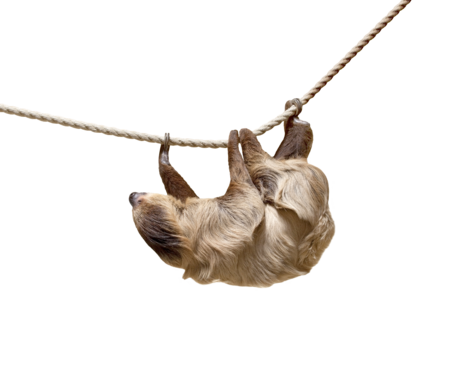Linnaeus' two-toed Sloth
Choloepus didactylus
![two-fingered sloth [Translate to English:] Zweifinger-Faultier im Tierpark Hellabrunn.](/fileadmin/_processed_/9/e/csm_faultier-tierpark-hellabrunn-amerika-tierlexikon_0d1404b6bf.jpg)
- Family
- Two-toed sloths (Megalonychidae)
- Weight
- 4 – 8 kg
- Habitat
- Tropical rainforests
Topsy-turvy world
Sloths spend most of their lives hanging upside down from trees. Their long, curved claws ensure a firm grip when dangling. Another important adaptation is the anchoring of internal organs such as the stomach and liver to the rib cage to prevent their weight squashing the lungs, allowing the sloths to breathe

The discovery of slowness
The Linnaeus’ two-toed sloth spends most of the day sleeping. When awake, it moves at a speed of less than 2 km/h, rarely descending to change trees. One of the few reasons it will descend is to defecate, which only occurs about once a week. However, sloths can be surprisingly fast when in immediate danger.
The humidity of the rainforest enables algae to grow on the sloth’s furry coat, which offer additional camouflage against predators.
Distribution


Hellabrunn participates in the European Studbook